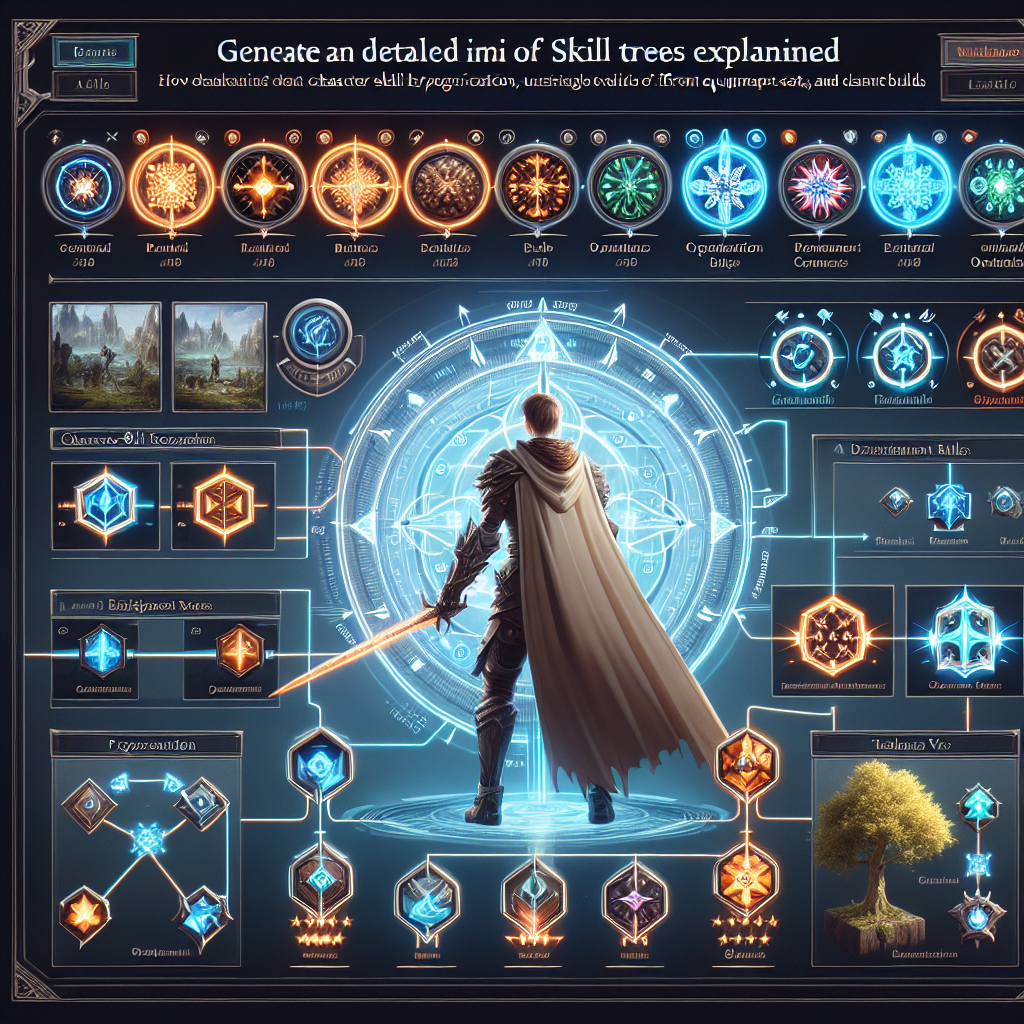Skill Trees Explained: How Progression Systems Define Your Role
In the ever-evolving world of AI and digital entrepreneurship, the concept of "skill trees" has become increasingly relevant. These intricate progression systems not only shape the gameplay experience but also define the roles and strategies players can adopt. As entrepreneurs, freelancers, and tech enthusiasts explore the vast landscape of AI-powered tools and side hustles, understanding the fundamentals of skill trees can provide invaluable insights into optimizing your path to success.
The Anatomy of Skill Trees
At its core, a skill tree is a branching structure that represents the different capabilities, upgrades, or specializations available to a user or character. These trees typically consist of interconnected nodes, each representing a specific skill or ability that can be unlocked or improved through progression.
Branching Paths and Strategic Choices
The key characteristic of a skill tree is its branching structure, which allows users to make strategic choices about the development of their skills. Unlike a linear progression system, skill trees enable players to prioritize certain abilities over others, tailoring their character or persona to their preferred playstyle or business objectives.
This branching structure encourages experimentation and diversification, as users can explore different paths and discover new opportunities. For instance, an AI entrepreneur may choose to focus on developing their data analysis skills, while another may prioritize natural language processing capabilities, leading to distinct roles and specializations within the same field.
Unlocking and Upgrading Skills
As users navigate the skill tree, they typically earn or acquire points or resources that can be used to unlock and upgrade individual skills. The order in which these skills are unlocked can have significant implications, as certain abilities may be prerequisites for others or provide synergistic benefits when combined.
This progression system allows users to gradually build and refine their capabilities, unlocking new opportunities and strategies as they advance. For AI enthusiasts, this could translate to mastering specific machine learning algorithms, natural language processing techniques, or data visualization tools, each of which may open up new avenues for side hustles or freelance work.
The Importance of Skill Trees in AI and Entrepreneurship
Skill trees play a crucial role in shaping the user experience, fostering strategic decision-making, and defining the roles and specializations that emerge within the AI and entrepreneurial landscape.
Personalization and Adaptability
By offering branching paths and customizable skill development, skill trees enable users to tailor their experiences to their individual needs and preferences. This personalization is particularly valuable in the context of AI-powered tools and side hustles, where the specific requirements and challenges faced by entrepreneurs can vary greatly.
As users navigate the skill tree, they can adapt their approach, focusing on the skills and capabilities that align with their business objectives, market demands, or personal interests. This adaptability allows for a more targeted and efficient use of resources, ultimately enhancing the chances of success in AI-driven ventures.
Fostering Diverse Roles and Specializations
The structure of skill trees encourages the emergence of diverse roles and specializations within the AI ecosystem. As users prioritize different skill paths, they develop unique expertise and become recognized for their specialized knowledge and capabilities.
For example, an AI entrepreneur focused on natural language processing may become a sought-after expert in chatbot development, while another focused on computer vision may excel in automating image-based tasks. This diversification of roles and specializations not only benefits the individuals but also contributes to the overall growth and innovation within the AI industry.
Balancing Generalization and Specialization
Skill trees often present a delicate balance between generalization and specialization. While some users may opt for a more generalist approach, exploring a broader range of skills, others may choose to specialize in a particular domain, honing their expertise to a high degree.
This balance is crucial in the context of AI and entrepreneurship, where the ability to adapt to changing market conditions and technological advancements is paramount. Generalists may possess a versatile skillset, allowing them to pivot and explore new opportunities, while specialists can offer deeper insights and more advanced capabilities in their areas of focus.
By understanding the nuances of skill trees, AI enthusiasts and entrepreneurs can make informed decisions about their own skill development, striking a balance between breadth and depth to maximize their potential for success.
Leveraging Skill Trees in AI-Powered Side Hustles
As AI-powered tools and platforms continue to revolutionize the entrepreneurial landscape, the strategic application of skill trees can be a game-changer for side hustlers and freelancers.
Identifying Complementary Skills
Skill trees can help entrepreneurs and freelancers identify complementary skills and abilities that can be developed in tandem. By understanding the interconnected nature of skills within a tree, users can recognize synergies and unlock new opportunities for growth and diversification.
For instance, an AI-powered side hustle focused on data analysis may benefit from developing skills in data visualization, machine learning, and communication – all of which can be represented and optimized within a skill tree. This holistic approach to skill development can enhance the overall value proposition and marketability of the entrepreneur or freelancer.
Navigating the AI Ecosystem
The complex and rapidly evolving nature of the AI ecosystem can be daunting for entrepreneurs and freelancers. Skill trees provide a structured framework for navigating this landscape, allowing users to map out potential paths, identify key milestones, and plan their skill development accordingly.
By understanding the interdependencies and prerequisites within a skill tree, AI enthusiasts can make informed decisions about which tools, platforms, or techniques to prioritize, ensuring a more efficient and strategic approach to building their AI-powered side hustles.
Optimizing for Specific Roles and Objectives
Skill trees enable users to optimize their skill development for specific roles or business objectives. Whether it's mastering a particular AI model, becoming an expert in a niche industry, or diversifying into complementary services, the branching structure of skill trees can guide entrepreneurs and freelancers in shaping their unique value proposition.
For example, an AI-powered side hustle focused on automating customer service processes may require a different skill set than one focused on predictive analytics for financial planning. By aligning their skill tree with their specific goals, users can better position themselves in the market and differentiate their offerings from the competition.
Scaling and Adapting to Change
The dynamic nature of the AI landscape means that entrepreneurs and freelancers must be prepared to adapt and scale their skills as new technologies, tools, and market demands emerge. Skill trees provide a flexible framework for continuous learning and development, allowing users to pivot and explore new branches as needed.
As AI-powered tools and platforms evolve, skill trees can help users identify and prioritize the skills necessary to stay ahead of the curve, ensuring their side hustles and freelance offerings remain relevant and valuable in the long run.
Key Takeaways
1. Skill trees are branching structures that represent the different capabilities, upgrades, or specializations available to users or characters, enabling strategic choices and personalization.
2. The branching structure of skill trees encourages experimentation, diversification, and the emergence of specialized roles within the AI and entrepreneurial landscape.
3. Skill trees play a crucial role in fostering personalization, adaptability, and the balance between generalization and specialization, which are essential for success in AI-powered side hustles and freelance work.
4. Leveraging skill trees can help entrepreneurs and freelancers identify complementary skills, navigate the AI ecosystem, optimize for specific roles and objectives, and scale their offerings in response to market changes.
Final Thoughts
As the AI revolution continues to reshape the entrepreneurial landscape, the strategic application of skill trees can be a powerful tool for AI enthusiasts, side hustlers, and freelancers. By understanding the intricacies of these progression systems, users can craft personalized paths to success, unlock new opportunities, and position themselves as valuable contributors within the ever-evolving AI ecosystem.





